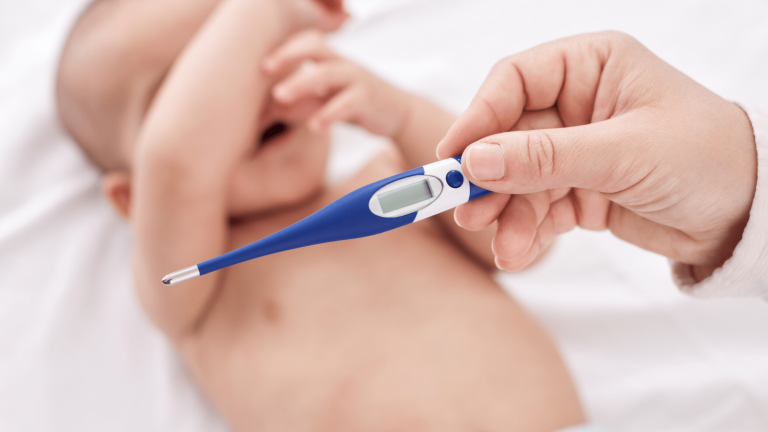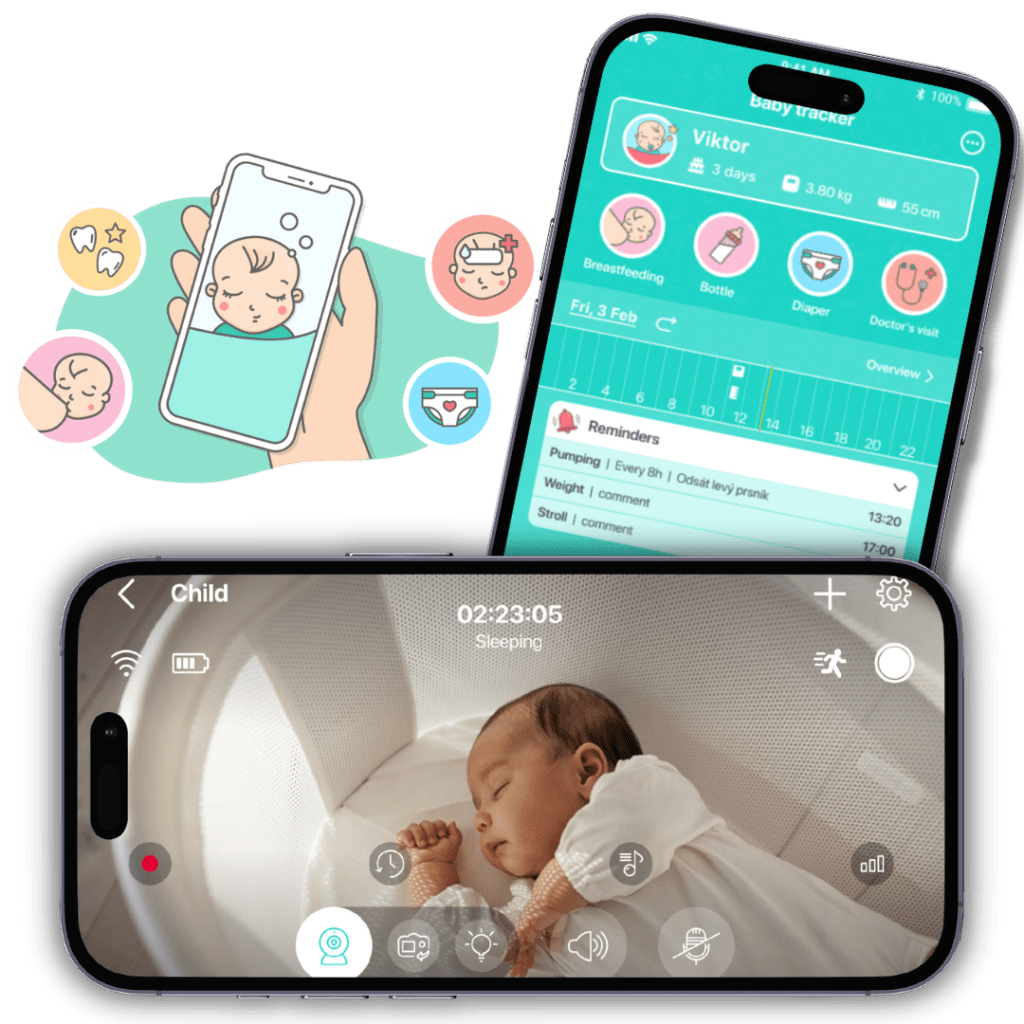
Baby Fever – How to Handle It
- Created:
26. 10. 2021 - Updated:
11. 12. 2023
It can be concerning to wake up in the middle of the night to a crying baby, and find they’re flushed or hot to the touch. The thermometer confirms your suspicions: Your baby has a fever. But what should you do?
It’s important to learn how to handle your feverish baby and recognize when you need to seek medical care.
Parents with the arrival of a baby will face many new challenges. One of them will sooner or later be an increased temperature or fever in their little baby. You will probably have to deal with it quite often. But don’t worry. We can help you with one concern now: The temperature in the baby usually does not mean anything serious.
What causes baby fevers?
A fever isn’t an illness. It’s considered a symptom of one. A fever usually means that the body is fighting an illness and the immune system is working. If your baby has a fever, in most instances it means they have probably picked up a cold or other viral infection. But it also may mean that teething period has come.
TIP: The complete guide to Baby Teething: What to expect?
What is a high temperature?
At body temperatures between 37.5 and 38.4 ° C, children are referred to as elevated temperatures. If the value rises above 38.5 ° C, the child has a fever. Temperatures above 39 ° C already mean a high fever.
What are the signs of fever in babies?
Your baby may act differently, and they may also be crankier and fussier than usual.
Other symptoms of a fever in babies include:
- Poor sleeping
- Poor eating
- Lack of interest in play
- Less active or even lethargic
- Convulsions or seizures
How to check baby temperature?
Your baby might:
- feel hotter than usual when you touch their back or chest
- feel sweaty
- look or feel unwell
Use a digital thermometer, which you can buy from pharmacies and supermarkets, to take your child’s temperature.
How to take baby’s temperature?
You can take a child’s temperature a few different ways, such as via the rectum (rectally), mouth (orally), ear, under the arm (axillary), or at the temples. The American Academy of Pediatrics recommends only using digital thermometers in children. Mercury thermometers should not be used because they pose a risk of mercury exposure and poisoning if they break. Rectal thermometers provide the most accurate temperature readings and can be the easiest to take in an infant.
To take a rectal temperature:
- Make sure the thermometer is clean. Wash it with soap and water or wipe it with rubbing alcohol.
- Lay your baby on their belly or on their back with legs bent toward the chest.
- Apply a little bit of petroleum jelly around the thermometer bulb and gently insert it into the rectal opening.
- Hold the digital thermometer in place for about 2 minutes until you hear the beep.
- Gently remove the thermometer and read the temperature.
IMPORTANT: Fevers can lead to dehydration if your baby is not drinking well or is vomiting with their illness. Young children can get dehydrated quickly.
Symptoms of dehydration may include:
- crying without tears
- dry mouth
- fewer wet diapers
Unless your baby seems uncomfortable and isn’t sleeping, eating, or playing normally, it’s fine to wait and see if the fever goes away on its own.
What to do if baby has a high temperature?
You can usually look after your baby at home. The temperature should go down over 3 or 4 days.
Do
- give them plenty of fluids
- look out for signs of dehydration
- give them food if they want it
- check on your child regularly during the night
- keep them at home
- give them paracetamol if they’re distressed or unwell
- get medical advice if you’re worried about your child
Don’t
- do not undress your child or sponge them down to cool them, a high temperature is a natural and healthy response to infection
- do not cover them up in too many clothes or bedclothes
- do not give aspirin to children under 16 years of age
- do not combine ibuprofen and paracetamol, unless a GP tells you to
- do not give paracetamol to a child under 2 months
- do not give ibuprofen to a child under 3 months or under 5kg
- do not give ibuprofen to children with asthma
TIP: Coronavirus in Babies: How to Protect Your Child Right Now
When to call your doctor?
According to The American Academy of Pediatrics, call your doctor if your baby:
- Is under age 3 months and has a fever; if your baby is under 2 months and has a fever, it is considered an emergency. Seek immediate medical care.
- Is lethargic or not responsive
- Has problems breathing or eating
- Is very cranky, fussy, or difficult to calm down
- Has a rash
- Shows signs of dehydration, such as fewer wet diapers, dry mouth, no tears with crying, or sunken soft spot on the head
- Has a seizure
Final Tip: Annie Baby Monitor – Baby Health Overview
Dealing with baby fever can be pretty stressful.
But, if you want to make it a bit easier, you can try using the Annie Baby Monitor.
It has an amazing baby tracker feature that can help you keep an eye on your baby’s health.
You can use it to keep tabs on regular doctor visits and important vaccinations. With the Annie Baby Monitor, you can be proactive and ensure your baby’s well-being.

The Annie Baby Monitor is a must-have for parents. With the baby tracker feature, you can take an active role in your baby’s health journey, from routine check-ups to vaccinations.






